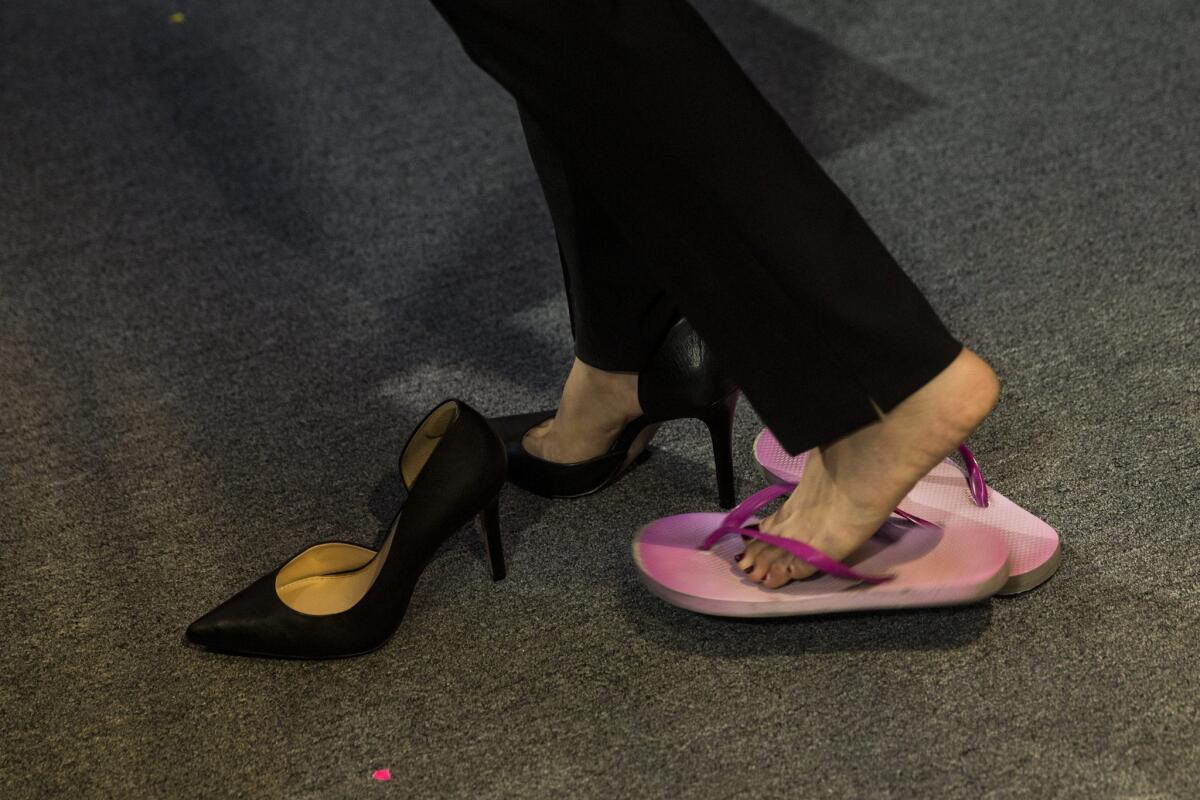Drawing the neck(line)

Q: Here’s a twist on sexism in the workplace. Why is it okay for women in a professional environment to wear low-cut tops that reveal an inch or more of the line between their breasts? Men never wear their shirts open. Men consistently wear their shirts with only one button at the top open. I find it offensive, yet how could I possibly even mention it without getting hyper-reactionary blowback? I’m not saying it’s harassment, but it seems there’s a different gender standard not typically discussed.
ANSWER: You are absolutely right: Different standards apply to women’s workplace attire. I just hope you’re not suggesting it’s because men are naturally more modest and professional. In casual-dress workplaces, I have seen more male chest hair than at a disco full of yetis.
It’s true that as you move toward the more formal end of the dress code spectrum, men have relatively few wardrobe choices: limited, safe, easy to comply with. Women ostensibly have more choices, but at a price: The safe zone between “dressing like a man” and “flaunting one’s body” is a narrow, ever-shifting path, with harsh penalties for missteps. And the game is somewhat rigged.
For starters, women’s clothing sizes are based on marketing, not measurements. They’re not always cut to suit different body types; even a correctly sized button-front blouse can sport a peekaboo gap between buttons 3 and 4. A neckline or hemline that looks perfectly demure when viewed from the wearer’s eye level can offer a drastically different perspective when the wearer is sitting at her desk or leaning over a conference table.
Granted, all these pitfalls can be avoided with time, research and experience. And tailoring. And money. And maybe 360-degree dressing rooms with upskirt mirrors and Cleavage Cams.
Back to your question: I can’t think of a realistic or respectful way for you to directly inform female colleagues that their cleavage is giving you the vapors. You might succeed with a discreet word to someone in HR or a woman who mentors the offender, assuming you come across as charmingly embarrassed, rather than incensed. Otherwise, your best option is to train your eyes to ignore the offending crevasse, as you would do with a colleague’s nose nugget or unzipped fly.
Bonus advice for new grads and interns: Even in a place with a casual dress code, err on the conservative side for the first few weeks. Take your workplace fashion cues not from magazines or mannequins or the nice salespeople working on commission, but from your employer’s dress code and your senior colleagues.
Of course, there’s no way to guarantee you’ll satisfy everyone’s personal standards of modesty and decorum. What matters is that the image you project is a conscious, deliberate choice that reflects your best self within your industry’s written and unwritten guidelines.
But no flip-flops.
Karla Miller writes about workplace issues for the Washington Post.






